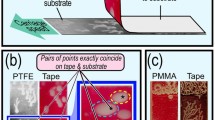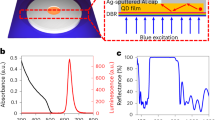Electric Television (original) (raw)
- Letter
- Published: 23 October 1926
Nature volume 118, page 590 (1926)Cite this article
- 505 Accesses
- 3 Citations
- 3 Altmetric
- Metrics details
Abstract
INVENTION appears to be multiplying in regard to this interesting subject, and I hear that more than one inventor in Paris is employing, for receiving, the cathode ray arrangement that I believe I was the first to publish in a letter to NATURE of June 18, 1908. The ideas embodied in this arrangement had occurred to me several years prior to that date, indeed not long after the production of the Braun cathode ray oscillograph invented in 1897. I actually tried some not very successful experiments in the matter of getting an electrical effect from the combined action of light and cathode rays incident upon a selenium-coated surface, in which I was assisted by the late Prof. G. M. Minchin, himself a great authority on electric cells sensitive to light, and also by Mr. J. C. M. Stanton. The transmitting apparatus consisted of a home-made Braun oscillograph in which a metal plate coated with selenium was substituted for the usual fluorescent screen, the image to be transmitted being thrown by a lens upon the selenium surface, and the end of the cathode ray beam being caused electromagnetically to traverse the projected image. Experiments were also tried in receiving with a Braun tube which I purchased in Germany, but in its then ‘hard’ form it proved very intractable.
Similar content being viewed by others

Paradoxical peeling patterns
Article Open access 04 September 2024


Article PDF
Authors
- A. A. CAMPBELL SWINTON
You can also search for this author inPubMed Google Scholar
Rights and permissions
About this article
Cite this article
SWINTON, A. Electric Television.Nature 118, 590 (1926). https://doi.org/10.1038/118590a0
- Issue Date: 23 October 1926
- DOI: https://doi.org/10.1038/118590a0